Jade Perch for Aquaponics: Podcast
Continuing our Podcast series. Today we road test the vegetarian loving Jade Perch with Murray Hallam. He’s always grabbing one out of his tank to show visitors. Whats so good about them? Should you consider growing Jade Perch if you live in a warm climate? What are the health benefits of eating Jade Perch and will it eat the food grown in your aquaponics system? Even the green stuff growing in your fish tank like algae?
Listen to the Audio Podcast
[sws_blue_box box_size=”450″]
Ecofilms: Now Jade perch tell us little bit about this fish that has got people raving about growing it in Aquaponics?
Murray Hallam: Well Jade Perch is an Australian native and its from central North Queensland, the Barcoo river system where it is native to and so is the fish that’s not really tropical but almost tropical.
One of the things we must realize when we’re raising it is we cannot let the water go below 15° C because if we do the fish don’t like that and will probably die. Will actually stop feeding and may die, so that’s where they come from and they are just an amazing fish. I believe they are the fish of the future personally. There are a few reasons for that.
One is their ease of raising. They are so easy to raise in tanks. They just fit well into tank culture.
They grow quite rapidly. You’ll get the fish of table size, plate size within 12 months. Some fish sooner than that. If your growing a batch they tend to grow pretty much all at the same rate. You will get some size differences obviously but they are good for batch growing like that and the other thing about them that is truly amazing is that they are extremely high in Omega 3 fatty acids.
Ecofilms: The CSIRO, the Australian scientific authority did a test on Jade perch and they tested 200 fish including Atlantic salmon and sawfish and silver perch and other fish, sea fish and so on and came out with this figure that the Queensland Jade perch contained an incredible 2483 mg of Omega three fatty oils in their flesh per 100 g of flesh and this was an extraordinary high quality. They are an oily fish aren’t they?
Murray Hallam: They really are. The fascinating about that test is that it’s a freshwater fish from warm water, now the general knowledge is, the generally accepted belief is that to have Omega three fatty acids in it – the fish must be a cold water fish from the ocean and this is the general knowledge that is out there and everyone assumes that but I must be getting old because I yell at the TV. When you see these health shows and they say you must have a cold water sea fish to get the omega-3 fatty acids and here right in Queensland – right under our noses is a freshwater fish from the Barcoo River system that is so very high in Omega three fatty acids and do you know why? Because the Jade Perch is basically a vegetable eater. It wants to eat vegetable matter. It’s natural diet is algae and riverbed weeds and that kind of thing and of course as we know the building blocks for Omega three fatty acids comes from plant matter.
The fish are just great at processing and converting it and turn it into the omega-3 fatty acids but the building blocks come from plant matter which is a fascinating thing. So in North Queensland, The James Cook University in fact in North Queensland has identified over 200 different types of unique algaes in Australia They are not found anywhere else. This is what the Jade Perch live on in their natural habitat. They eat this kind of thing.
Ecofilms: Now that brings us to the next question, whether the Jade perch living in your aquaponics tank will have the same level of Omega 3 when fed on just a boring diet of fish pellets?
Murray Hallam: Well probably not. Nobody really knows that yet because no one has done the tests that we know of that we are able to identify. The CSIRO did the tests on wild caught fish and straight out of the river, the Barcoo river system, but no one has done any tests or growing tests on Jade Perch to test their oil content. I would suspect that the omega-3 fatty acids are not as high in fish tank reared unless we make sure we give them a diet of plant matter as well. Now Jade Perch just love eating plant matter you can keep my pellets, the do very well on commercially available pellets but if you throw a lettuce head in that was left over or gone to from your Aquaponics tank, they just rip it apart, they just go for it. They love it, so much. We frequently do that to give them a varied diet.
Ecofilms: And you can feed Jade perch a variety of different green feed stock. I’m just thinking of some of the algae that you could grow or duckweed. Tell us a little bit about that?
Murray Hallam: Well of course they love duckweed. Frequently if I need to go away from weekend, I have a daughter that is in Coffs Harbour so we go down there for a three or four day weekend and I just simply put a couple of handfuls of duckweed in each tank and I know that the Jade perch are very happy for the weekend. When I come back there not much duckweed left if any and they’ve been taken care of. They love eating that kind of thing.
Ecofilms: I’m very interested in fish that eat algae. In one of your videos you use a broom to scrape the inside of your tanks to keep the whole system free of algae because algae robs the system of oxygen. Just wondering whether you could encourage algae in a tank for the Jade perch to suck the stuff off the side of the tank?
Murray Hallam: They will do. I have observed them doing that but of course if you’re going to feed them pellets then that’s an easy option to the fish as well, so I think to get them to eat that on a regular basis you would have to have another feeding regime. We need to have someone do a study on Jade perch and the feed that is required to produce this Omega three in their oils. Nobody really knows exactly how much they really need and how you produce the right kind of algaes.in a home system.
The trouble is if you feed them commercially available pellets, that’s very convenient and its convenient for the fish too. They get a feed very quickly and very easily and so they become a bit lazy I guess they go to the pellets first. That’s why I like to give my fish duckweed and lettuce and sometimes I give them nothing else but that three or four or five days, just to save money on pellets to start with and give them a varied diet of their natural thing I think. The other thing I do, I tried all sorts of different vegetables out of the garden and the thing they definitely have a preference of what they like, for example, Cos Lettuce is their favorite, without a shadow of a doubt. They’ll eat that before anything else. Then they’ll go through a variety of lettuce and the last one which is quite funny I think is silver beet or Swiss Chard as some people call it. They’ll eat that only if they had nothing else for a whole day. So that tells you something, doesn’t it.
A couple of years ago when I was in California, I met a very interesting man down there in Southern Californian who has a huge greenhouse and he is doing a lot of experiments on trying to come up with a feed that is made of natural products like duckweed and a few other plants that he had there. Coming up with a feed that is totally balanced and the idea being that you can grow everything you need to feed your fish on your own property. I think that’s a very laudable program to be involved in and I think thats something that needs to be pursued.
Ecofilms: What about black soldier fly larvae? Some people have said that they’ve tried to grow the things, those little grubs and the fish won’t eat them?
Murray Hallam: I had the same experience with Jade Perch in particular. My experience has been if I harvest black soldier flies by hand before they become mature, when they are still in a white condition rather than going the hard outer shell then the fish will eat them quite readily. So once again, a lot of interesting things we need to explore.
Ecofilms: Where do you get Jade perch from? If you wanted to get a bunch of fingerlings and you live in Australia, where you get them from?
Murray Hallam: There are several hatcheries in south-east Queensland here that produce Jade perch every summer. They hatch them out by the thousands and sell them around. Generally speaking they cost about a dollar. S1.20 per fingerling and there’s a number of hatcheries on Internet that you can find that sell Jade perch.
Ecofilms: What about if I was living in America and I wanted Jade perch. How do I get them?
Murray Hallam: I think at this time it might be a bit impossible really until some person over there, some hatchery type company brings them into the country, goes through all the legal process that they’ll have to go through to bring into America and then make them available.
I think the USA is a bit like Australia state-by-state you have to fight the regulations in order to be able to use them that but I really believe they are the fish of the future. I really do because the other interesting thing about Jade Perch that I forgot to mention is that they would be a very good thing for the commercial industry who might want to grow fish for the fillet market. High recovery of fillets in the body.
Ecofilms: Murray what do they actually taste like?
Murray Hallam: They taste great! When we cook them, we have two ways we cook them. We either steam them and then serve them up with the usual veggies you might eat with a fish dinner. Or we smoke them. Just a simple smoker that you might take camping or hunting. When smoked, an average plate sized Jade perch will smoke really well at about 25 minutes. Beautiful. Because they’re so oily, they smoke absolutely beautifully and because they’re oily once again if you steam them, their just beautiful on the plate. Lovely white flesh. Not too many bones. No more or less bones than in any ordinary fish. Very, very easy to get a whole lot of good meat off! Fantastic.
Ecofilms: How big do they grow in aquaponics system? I have people over yesterday who couldn’t believe that the fish will grow big in a tank. They think they’re like goldfish. That they’ll only grow to the size of your fish tank (and stay stunted).
Murray Hallam: Well I’ve had some fish that have grown well past two kilos. What I found with a lot of fish, if they get too big then they lose their niceness of flavor. They become a bit tough to eat so the perfect size fish are around about one or two pounds or 1 kg, Half a kilo to one kilo. Beautiful to eat, and they grow quite rapidly to that size. You’ll get one pound or 500 gram fish, Jade perch in 12 to 15 months in a home Aquaponics system. Fantastic.
Ecofilms: Can you breed them?
Murray Hallam: You could but Australian Native fish traditionally are very difficult to breed and that is because their natural habitat, the way that they have evolved is that they might be in a muddy creek – because in Australia we have droughts, long droughts, they might be in a muddy river or lagoon, for three, four, five years. No fresh water flying through and that’s where they exist. Of course they do not breed when that’s going on. Then the rains come and there is a fresh flush of water through the rivers – they breed. The hatcheries have tried to replicate that. Sometimes it works and sometime it doesn’t. A number of years ago the CSIRO in Australia synthesized the hormones that are needed and of course what happens now the hatcheries do, they get a mummy and daddy at the right time of the year and they give them a hormone injection and a few weeks later a few days later they do their thing and we get thousands and thousands of little hatchlings. So that’s how its done in modern day times. Some people might find that objectionable and say its not natural but we’re yet to discover what that sequence is to be to get them to breed naturally.
Ecofilms: And growing them in aquaponics is the main thing. I must agree we have about 30 of them and they are an excellent fish to grow in aquaponics and power the system. Their poop is quite transparent. They don’t pollute the water as much as other fish like barramundi do.
Murray Hallam: No their poop is – I don’t know how best to describe it. Their poop comes out like suspended solids. It is not great big lumps of poop at the bottom of the tank with Jade perch or silver perch for that matter, another Australian native, so the solids of the fish they produce are very easily picked up and carried away by the pump and sent through the system to be caught by your wonderful gravel grow beds or if you have a filter in your system, by the filter.
So they are a very easy fish to raise in a home system. They are very tolerant of not so good water conditions. They are very tolerant if being spooked or being upset. They settle down quickly. Just a great all-round fish.
Ecofilms: Aggression. Someone was saying that they can be quite territorial and chase one another around in the tank.
Murray Hallam: Yes, we see that in our tanks. We have seen fish with bite marks on the sides of them. They have been getting some kind of picking order discussions with each other. We don’t know what brings that on. Maybe its a pre-mating thing? Like all fish if you’re able to sex them easily you’d be better off with one male in the tank with several females because it’s the males who fight over territory. But by and large that doesn’t happen all that often. They’re not an aggressive fish like barramundi are for example or Murray cod are – no way. Jade Perch have got a very small mouth so they tend not to try and eat other fish. We’ve actually done experiments and got small mosquito fish out of the dam which we got down the back which a little tiny tiny fish, half an inch long. Five millimeters at the most and we put them in the tank with the Jade Perch. Not fed the Jade Perch for several days to see what would happen. The little fish swim around, the Jades won’t touch them. They’re just not interested in them.
They’d rather eat your lettuce out of your sandwich.
Ecofilms: Vegetarians! Vegans.
Murray Hallam: There you go.
Ecofilms: Thank you very much Murray. That was a wonderful discussion and we’ll have more next time.
[sws_green_box box_size=”630″]![]() If you like this audio series, why not subscribe to our free podcast at Itunes. Listen to Aquaponics on your Ipad or audio device or whatever gizmo you have. Leave a comment and rate the podcast. If you have a question for Murray Hallam, leave a message below. Thanks for listening. [/sws_green_box]
If you like this audio series, why not subscribe to our free podcast at Itunes. Listen to Aquaponics on your Ipad or audio device or whatever gizmo you have. Leave a comment and rate the podcast. If you have a question for Murray Hallam, leave a message below. Thanks for listening. [/sws_green_box]

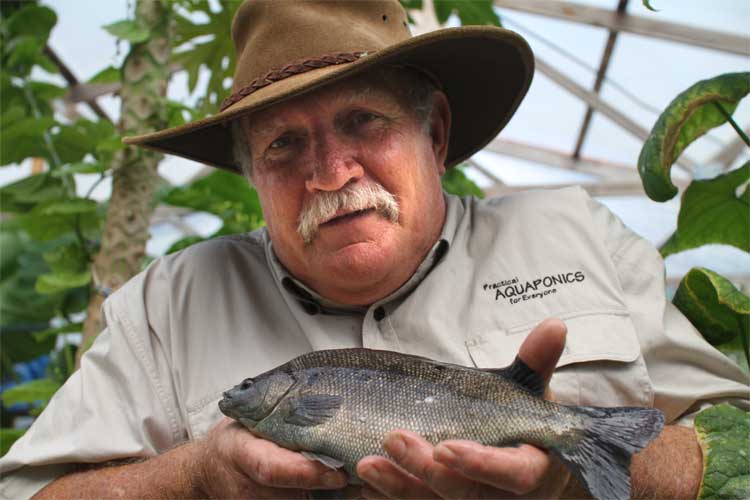





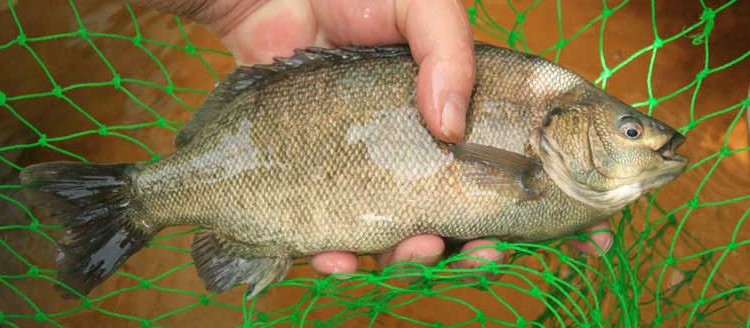
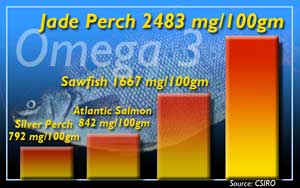
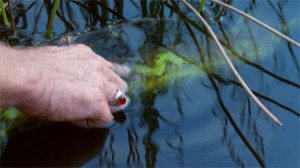
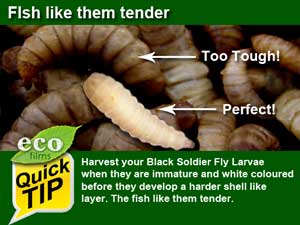
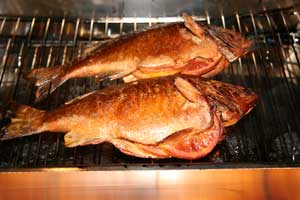
Recent Comments